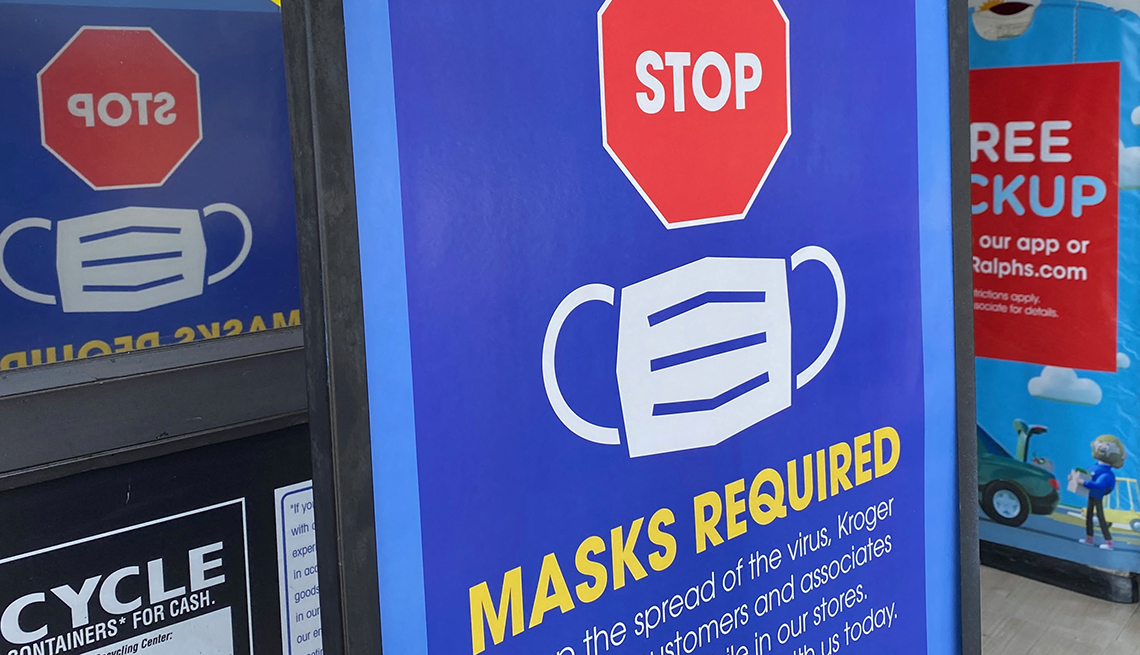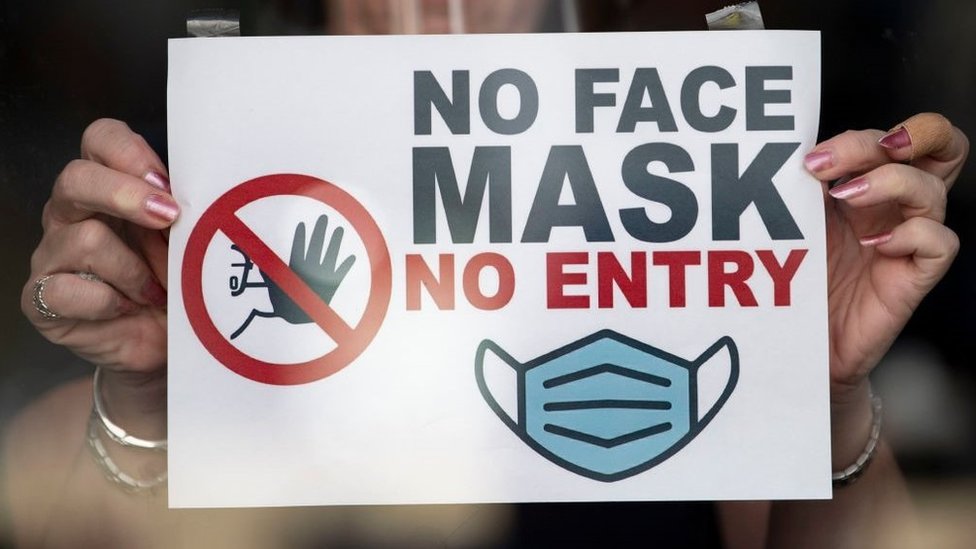Nassau County Mask Mandate History: Nassau County Ban Masks

Nassau County, New York, has seen its fair share of mask mandates throughout the COVID-19 pandemic. These mandates have been implemented to protect public health and curb the spread of the virus.
Timeline of Mask Mandates in Nassau County
The timeline of mask mandates in Nassau County reflects the evolving understanding of the virus and its transmission. Here is a summary of the key events:
- April 2020: Nassau County Executive Laura Curran issued an executive order requiring face coverings in public spaces, making it one of the first counties in New York to do so. This order was implemented in response to the rapidly increasing number of COVID-19 cases in the county.
- May 2020: The county revised its mask mandate to align with state guidelines, requiring face coverings in indoor public spaces and on public transportation.
- June 2020: The county further modified its mask mandate to include outdoor spaces where social distancing was difficult to maintain.
- September 2020: The county lifted its mask mandate for outdoor spaces, but it remained in effect for indoor public spaces.
- May 2021: Nassau County lifted its mask mandate for fully vaccinated individuals in most indoor settings, following guidance from the Centers for Disease Control and Prevention (CDC).
- August 2021: The county reinstated its mask mandate for all individuals in indoor public spaces, regardless of vaccination status, due to the surge in COVID-19 cases driven by the Delta variant.
- February 2022: The county lifted its mask mandate for all individuals in indoor public spaces, citing declining case numbers and increased vaccination rates.
- December 2022: Nassau County implemented a temporary mask mandate for all individuals in indoor public spaces, including schools, in response to the rise in COVID-19 cases due to the Omicron variant. This mandate was lifted in February 2023.
Reasoning Behind the Initial Mask Mandate
The initial implementation of the mask mandate in Nassau County was driven by several factors, including:
- Scientific evidence: The scientific community had established that face coverings could effectively reduce the spread of respiratory droplets, which carry the virus.
- Public health concerns: The rapid increase in COVID-19 cases in Nassau County posed a significant threat to public health, particularly for vulnerable populations.
- Prevention measures: The mask mandate was implemented as a preventive measure to slow the spread of the virus and protect the community.
Impact of the Mask Mandate on the Local Community, Nassau county ban masks
The mask mandate had a significant impact on the local community, both in terms of public opinion and business operations:
- Public opinion: The mask mandate was met with mixed reactions. While some residents supported the mandate as a necessary measure to protect public health, others opposed it, citing concerns about personal freedom and the effectiveness of masks.
- Business operations: The mask mandate posed challenges for businesses, particularly those in the service industry. Some businesses reported a decline in customer traffic, while others faced difficulties in enforcing the mandate.
Economic and Social Implications

A mask ban in Nassau County could have significant economic and social implications, impacting businesses, communities, and individual freedoms. While some argue that a ban would boost the economy and restore normalcy, others express concerns about potential negative consequences.
Economic Impact on Businesses
The potential economic impact of a mask ban on businesses in Nassau County, particularly those in the hospitality and retail sectors, is a complex issue. While some businesses might experience increased foot traffic and revenue due to the removal of mask requirements, others could face challenges due to customer preferences, potential health concerns, and ongoing pandemic-related uncertainties.
- Increased Foot Traffic and Revenue: Some businesses, especially those in the hospitality sector, might see an increase in foot traffic and revenue as customers feel more comfortable dining in or attending events without masks. This could be particularly beneficial for businesses that have struggled during the pandemic.
- Customer Preferences and Health Concerns: However, some customers may still prefer to wear masks, even if not required, due to personal health concerns, especially those with underlying medical conditions or who are immunocompromised. Businesses could face a dilemma in balancing the needs of all customers.
- Ongoing Pandemic-Related Uncertainties: The ongoing COVID-19 pandemic continues to pose uncertainties, with potential for new variants and surges. Businesses might need to adapt their policies and procedures based on evolving public health guidelines, which could lead to increased costs and operational challenges.
Social Consequences of a Mask Ban
A mask ban could also have social consequences, potentially leading to increased polarization and conflicts within the community. While some may welcome the return to pre-pandemic normalcy, others may feel uncomfortable or unsafe in public spaces without masks, leading to potential social friction.
- Increased Polarization: A mask ban could further divide the community, with those who support the ban and those who oppose it holding differing views on public health and individual freedoms. This could lead to heated debates and social tensions.
- Conflicts Within the Community: The removal of mask mandates could lead to confrontations between individuals who hold differing opinions on mask-wearing. This could result in verbal altercations, physical confrontations, or even legal disputes.
- Impact on Vulnerable Populations: The ban could disproportionately impact vulnerable populations, such as older adults, individuals with underlying health conditions, and children who are not yet eligible for vaccination. These groups may feel less safe and more hesitant to participate in public activities.
Ethical Considerations
The decision to implement or lift a mask mandate involves a complex interplay of ethical considerations, balancing individual freedom of choice with public health concerns.
“The right to freedom of choice should not come at the expense of the health and well-being of others.”
- Freedom of Choice: Individuals should have the right to make informed decisions about their health and well-being, including whether or not to wear a mask. However, this freedom should be balanced with the responsibility to protect the health of others.
- Public Health Concerns: Public health measures, such as mask mandates, are designed to protect the health of the community by reducing the spread of infectious diseases. The effectiveness of masks in reducing transmission of COVID-19 has been well-documented.
- Ethical Dilemma: The decision to lift a mask mandate presents an ethical dilemma. While some argue that individuals should have the freedom to choose, others believe that public health concerns should take precedence, particularly in the context of a pandemic.
Nassau county ban masks – The Nassau County mask ban, a controversial measure implemented in response to the COVID-19 pandemic, has sparked debate regarding the balance between individual liberty and public health. This debate mirrors the political landscape in Minnesota, where Governor Tim Walz has faced criticism for his own pandemic-related policies.
While the specifics of each situation differ, the core issue of balancing individual rights with the need for collective action remains a central theme in both cases, highlighting the complex challenges faced by elected officials during times of crisis.
The Nassau County mask ban, while a contentious issue, underscores the ongoing debate regarding individual liberties and public health measures. This debate mirrors the larger conversation surrounding the potential of emerging technologies, such as ripple xrp , to disrupt established systems and bring about significant changes.
The ripple effects of the Nassau County mask ban, both in terms of its impact on public health and its implications for future policy decisions, will undoubtedly be studied and analyzed for years to come.
